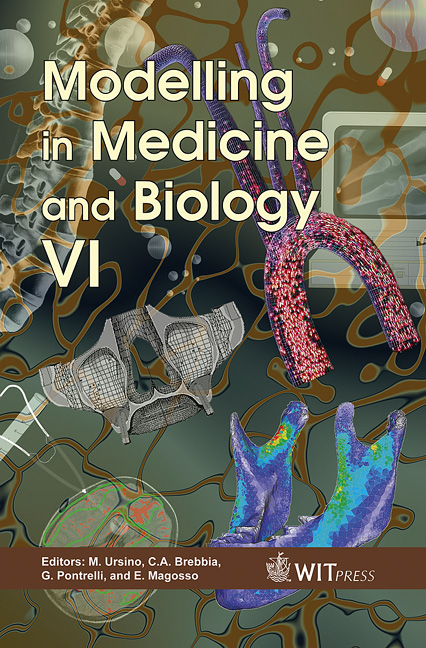Computational Fluid And Mass Transport On Macro And Micro Scales In An Artificial Kidney
Price
Free (open access)
Transaction
Volume
8
Pages
14
Published
2005
Size
609 kb
Paper DOI
10.2495/BIO050011
Copyright
WIT Press
Author(s)
S. Eloot & P. Verdonck
Abstract
The evaluation of dialyzer geometry was obtained by investigating transport processes and fluid properties inside the dialyzer. With computational fluid dynamics (CFD), a macroscopic as well as a microscopic model of the dialyzer was developed. Blood and dialysate flow distributions were calculated in a macroscopic numerical model of a low flux hollow fiber dialyzer. Computer simulations were compared to flow field SPECT visualizations (Single Photon Emission Computerized Tomography). The derived local fluid velocities were further implemented in a three-dimensional microscopic computer model of a single hollow fiber with its surrounding membrane and dialysate compartment. Different equations govern blood and dialysate flow (Navier-Stokes), radial filtration flow (Darcy), and solute transport (convection-diffusion). Blood was modeled as a non-Newtonian fluid with a viscosity varying both in radial and axial direction. Dialysate flow was assumed as a laminar Newtonian flow with constant viscosity. The permeability characteristics of the asymmetrical polysulphone membrane were calculated from laboratory tests for forward and backfiltration. The model was calibrated and validated in order to accurately calculate water removal as well as mass transport of small (urea) and middle molecules (vitamin B12 and inulin). Furthermore, the present microscopic CFD model was used to investigate the impact on the mass removal of dialyzer geometry and flow distributions. Keywords: dialyzer, ultrafiltration, backfiltration, mass transport, convection diffusion, viscosity model, hemoconcentration, CFD.
Keywords
dialyzer, ultrafiltration, backfiltration, mass transport, convection diffusion, viscosity model, hemoconcentration, CFD.





